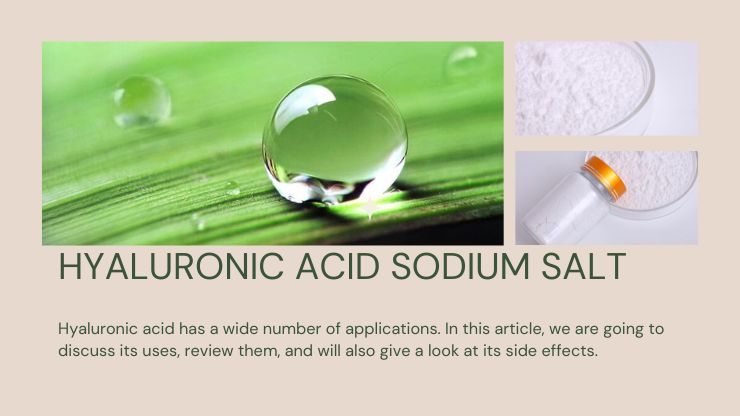Hyaluronic acid has a wide number of applications. In this article, we are going to discuss its uses, review them, and will also give a look at its side effects. We will also ponder some of the contradictions that have been plaguing the users for a long time.
Uses and Benefits
- Osteoarthritis- Hyaluronic acid is used in the treatment of knee pain occurring in osteoarthritis Also known as degenerative joint disease, osteoarthritis is the most common form of chronic arthritis that affects people worldwide.
- Cataract Extraction- This process involves the surgical removal of the cataract from the eyes. The lens of the human eye in some cases may get clouded as people grow older. This disease affects the vision in older people and has to be surgically The Hyaluronic Acid acts as a tissue lubricant during the operation.
- Intraocular Lens Implantation- This is a special type of lens that is placed instead of a natural eye lens after any cataract surgery. During cataract surgery, the lens is removed and this artificial lens takes its place.
- Corneal transplant- Patients undergoing this sort of operation suffer from damaged tissue in their cornea. The damaged part is removed and replaced by healthy tissue received from a donor. This surgery is done to improve the eyesight and in some cases to prevent infection altogether.
- Glaucoma Filtration- This surgery is done to stabilize the eye pressure by providing an alternate drainage pathway for the internal fluid of the eye. This will significantly reduce the fluid pressure in the eye and the patient will be able to read or do strenuous work for a longer period.
- Retinal Detachment Surgery- The excess fluid build-up in the retina causes a condition known as a detached retina. Problems include blurred vision and can be healed and treated with the help of a scleral buckle surgery.
In all the above cases Hyaluronic Acid helps similarly, that is, to act as a cushion and a lubricant in between the joints and the other tissues.
In most cases, this acid is used for treating people suffering from osteoarthritis. In such cases, the synovial fluid within the joints, especially the knees, gets withered away, thereby giving rise to inflammation and pain. Intraarticular injection of hyaluronic acid helps to reduce pain and helps to increase joint function in such patients. Clinical studies show that the acid is a primary component of the synovial fluid and healthy joints and by injecting it, it helps to regenerate the joints of the patients. The network of hyaluronic acid that surrounds cells provides a molecular scaffold for many components of the extracellular matrix.
The fluid has many biomechanical properties. It acts both as a shock absorber and a lubricant for knee joints. It also has many biochemical properties such as pain regulation, tissue homeostasis, and lowering of inflammation. Binding the acid to nerve cells reduces the nerve’s ability to sense pain and respond to pain stimuli. It helps to maintain normal joint structure, promotes healing by regulating chondrocyte growth and viability, and also stimulates the synthesis of articular cartilage components such as collagen, proteoglycans, and HA. The biochemical activities of HA are regulated by hyaluronic acid-binding to the cd44 receptor which is expressed by many cell types including chondrocytes, synoviocytes, and inflammatory cells. Importantly though the cellular responses to HA binding vary depending on its molecular mass. In osteoarthritis-affected joints, the concentration and molecular weight of hyaluronic acid are reduced as a result of decreased synthesis and increased activities of matrix-degrading enzymes which occur in response to chronic inflammation.
Side Effects:
A few side effects may include postoperative inflammation, corneal edema, and an increased rate of intraocular pressure. This medicine has to be prescribed after consulting a doctor. A patient has to go through a lot of tests before they can receive the injection. In a situation where a patient is suffering from hypersensitivity and has infected areas on the skin around the injection sites, the medicine should not be taken before the above-mentioned conditions are treated first. The important components of biochemical and biomechanical properties of hyaluronic acid make it an important molecule for maintaining joint health, however not without supervision.








